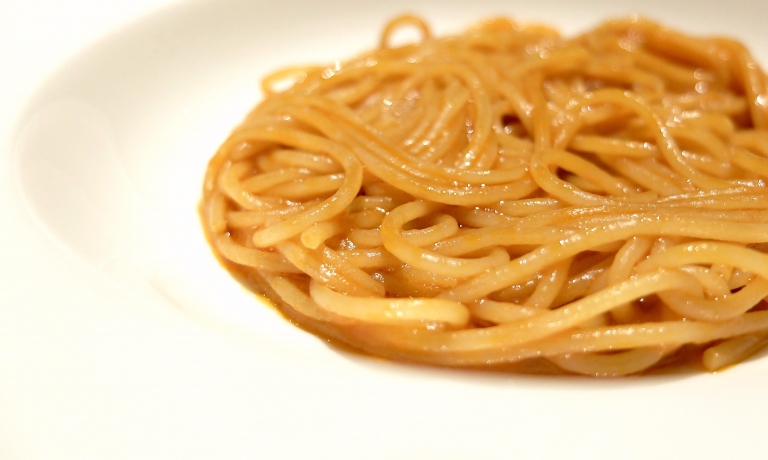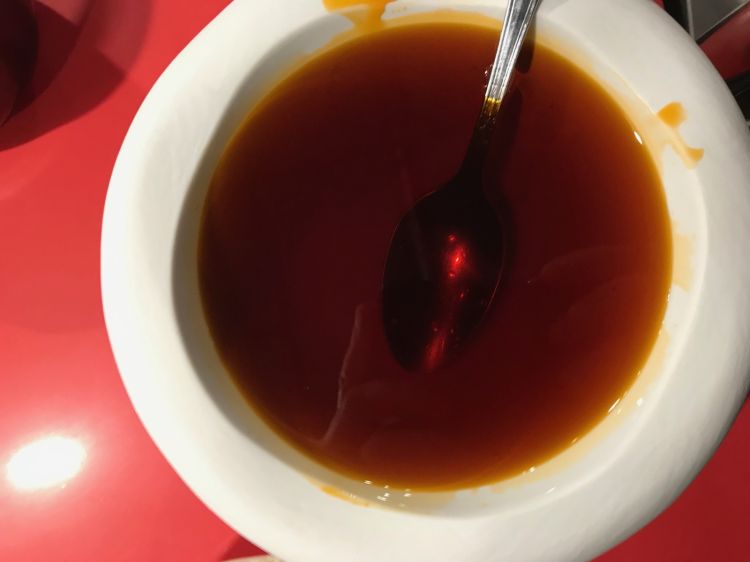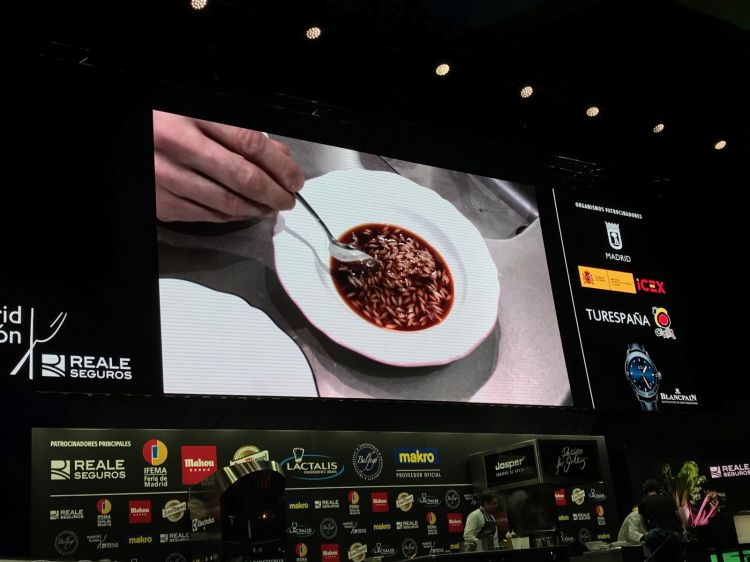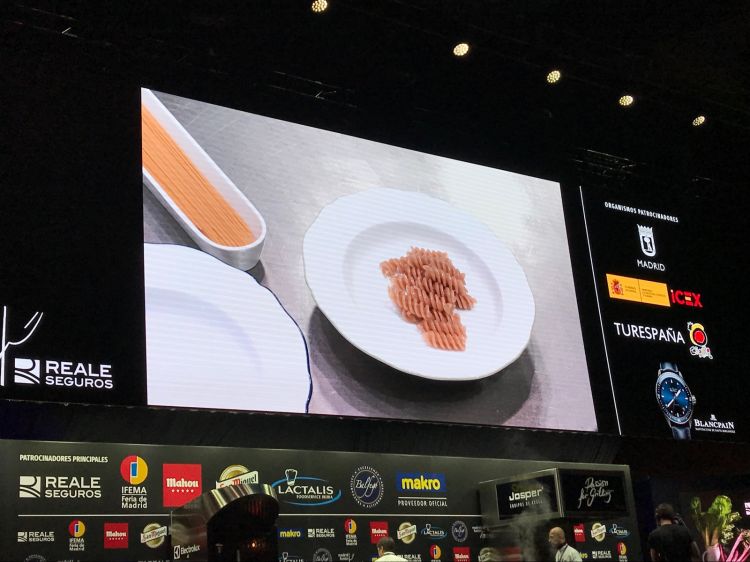Riccardo Camanini is different. «When you invited me on this stage, I got goose pimples» he tells the audience of Madrid Fusión, on the first of the three days of the Spanish congress - 17th edition. The debut was in 2003, and the following year guest chef Carlo Cracco and journalist Paolo Marchi got the idea of creating something similar in Italy too, in Milan, and indeed Identità was born the following winter.
But let’s not change topic: Riccardo Camanini is different, we were saying. «I remember when 20, 25 years ago, I was enchanted by the Renaissance Spanish cuisine was experiencing… You are the masters of technique. So I wondered: what could I have to tell them? What can I say in Madrid?». The answer was something with a strong identity, pasta, «perhaps in this way I’ll give an interpretation of both myself and this product». The chef from Lido 84 followed Ricard Camarena, who presented some extraordinary dishes, and the guys from Disfrutar, always avantgarde, with their sensational fake cheeses. In both cases, the lessons had a strong visual impact, for the thrill of food bloggers and their photos.
Camanini of course chose a different approach. No show, the wow factor only reached the most careful palates: indeed, you need a good dose of sensitivity and experience to understand the exceptional character of his
ponencia.
Basically, our chef presented three dishes of pasta that are as banal as it gets, in theory: Spaghetti al pomodoro, Risoni in brodo, Fusilli in bianco. The following explanation made it clear that Camanini had not gone amd: they were all “special” versions.
The first dish we analysed at length in a long piece: it was Spaghettino unto in rosso through which he recuperated an old memory. You can find everything about it here: Spaghettino unto in rosso by Riccardo Camanini (and other delicacies).

Spaghettino unto in rosso
As for the
Risoni in brodo, the fun part is not the risoni, but the broth. «I worked on a classic dish offered to both children and the elderly». The idea, we were saying, came from the broth, and only by chance.
«A few weeks ago, on Lido 84’s closing day, I stopped at the restaurant. Among other things, I had to change the cold water in which the chickpeas were soaking. However, I noticed that the liquid had acquired a nice amber colour. I thought about it and then something clicked, and I decided it to keep it. In fact, the following day I reduced it for eight hours, from one litre I got very little, a process almost impossible to present».

Reduced chickpea water, it acquires a surprising flavour...
The colour is brown, «I tasted it and it has a strong flavour: like
jus de crustacés, actually,
d'homard. I hadn’t added anything else, not even salt, yet what I had was a sort of pure juice of lobster, not even a bisque: it immediately reminded me of the fond the French use to make
tramblotantjelly. I recalled the aromas I perceived twenty years ago, when I was working in France. Incredible».
So the pasta in broth was soon ready: you cook the risoni pasta as usual, then add this sort of magic potion, with an incredible flavour and elegance.

Risoni in brodo shown on the screen, at the congress
The third recipe – pasta in bianco – is the more focused on technique. «I started from the idea of making some healthy and easy to digest pasta, that would be slightly in contrast with the Italian concept of “al dente”». This requires a premise: the cooking of the pasta leads to starch gelatinization. The starch is formed by two complex molecules, amylose and amylopectin, which join forming grains that cannot melt in water at room temperature and would be hard to for the digestive enzymes to attack. In order to become easier to digest, the grains of starch must be brought to a high temperature, in a watery environment: in these conditions they hydrate, loose their ordered structure and acquire a disordered structure, with the features of a gel. This is the gelatinization process of starch, which makes it possible for digestive enzymes to attack it. Italians want pasta “al dente”: this means the starch is only on the outside, while the inside is pleasantly strong, but difficult to digest.

When the gelatinized starch cools down, a phenomenon called starch retrogradation takes place through which the molecules partially reacquire their order (the most typical example is stale bread). Meanwhile, however, the cooking has partially transformed the starch in a simpler and easier to digest sugar.
Camanini forces the gelatinization and retrogradation processes of pasta. «I take fusilli, cook them in a steam oven at 80°C for 12 hours, sometimes spraying saline solutions so as to balance the salt. Then I put them in the fridge at 3°C for 12 more hours», this for one week. He basically cooks the pasta in the steam oven for 84 hours, cooling it down for 84 hours also.
«At the end of this process, the fusilli have acquired a nice amber colour. I toss them in boiling water for 3-4 minutes, no longer», and then he drains them. They are perfectly cooked but consistently al dente, with no difference between the inside and the outside. They preserve all the wheat flavour, without passing it to the water during cooking. In fact, the flavour is made more powerful by this process: «This is why it’s best to choose a very light, not overpowering seasoning». A drop of extra virgin olive oil, some grated Parmigiano, and
Camanini’s
Fusilli in bianco are ready.
Translated into English by Slawka G. Scarso